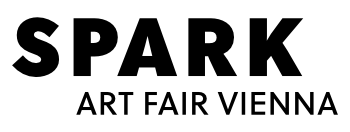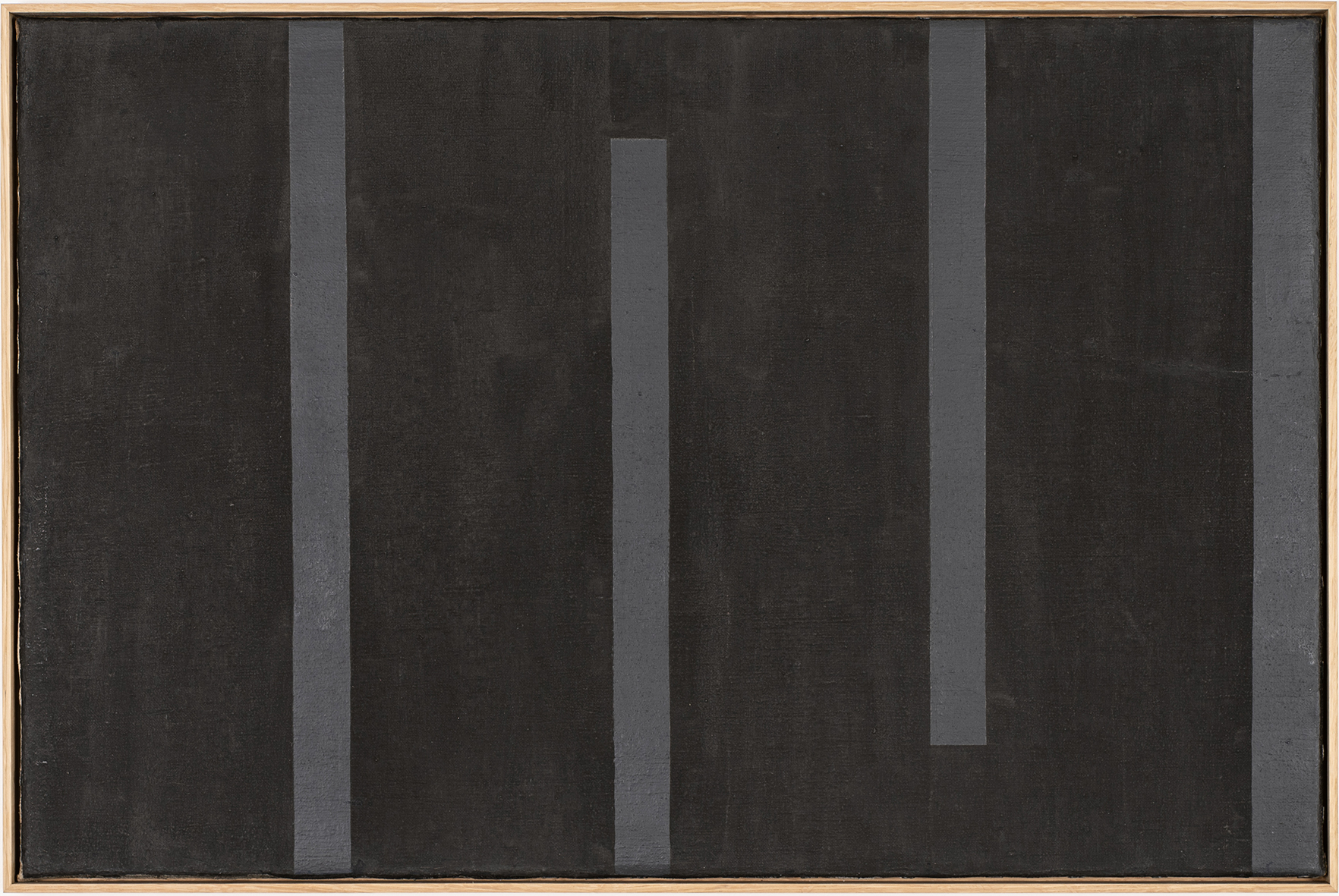Gregor Podnar
Gorgona: Julije Knifer and Ivan Kožarić
Julije Knifer (1924 – 2004) is recognized as one of the most prominent artists related to Concrete Art after 1945. His
meanders are interpreted differently depending on the period in which they appeared: first in the context of
geometric abstractions and neo-constructivism of the New Tendencies of the 1960s and with their asceticism and
interest for the absurd present in the context of anti-art of the neo-avantgard.
Imaginative elusion of creative closure characterizes the highly diverse work of Ivan Kožarić (1921-2020). Sculptures of the human figure created in Zagreb in the early 1950s define his earliest work. Inspired by the modernist stylistic framework, but subtly subverting any formalist determinants, they point to Kožarić’s pursuit of a range of different expressive approaches and his
search for artistic freedom, which from 1959 to 1966 coincided with his participation in Gorgona group. Despite being mostly known as a sculptor, Kožarić had since his artistic beginnings and until the recent years worked in a variety of media, creating a powerful body of work that spans from permanent and temporary sculptures, installations, and urban interventions, to assemblages, proclamations, photographs, and paintings.
Kožarić thus created an opus in which curiosity, spontaneous encounters, and change, give form to often unexpected configurations and compelling works permeated with ambiguity and an exploratory zest.
Biography
Born in Osijek, Croatia in 1924 and died in Paris, France in 2004.
Knifer represented Croatia in the 2001 Venice Biennale. In 2014, the Museum of Contemporary Art, Zagreb mounted a
full retrospective of his work; he has previously been exhibited at the Centre Pompidou, Paris; MAMCO, Geneva; and
the Museum of Contemporary Art, Sydney; works by Knifer can be found in various private and museum collections
around the world including the MoMA in New York City, Städtische Galerie im Lenbachhaus in Munich, the National
Gallery in Berlin.
Ivan Kožarić was born in 1921 in Petrinja, Croatia and died in Zagreb, Croatia in 2020.
Significant recent exhibitions of the work of were held at Musée d’art moderne in Paris (2002), the Art Pavilion in Zagreb (2005–2006), and at the Haus der Kunst in Munich (2013). He has participated in notable international group shows, such as Biennale di Venezia (1976), Bienal de São Paulo (1979), and documenta 11 (2002).
Public Collections:
Museum of Modern Art, New York, USA.
Erste Collection, Vienna, Austria.
M HKA – Museum of Contemporary Art Antwerp, Belgium.
Museum of Contemporary Art, Zagreb, Croatia.
Gregor Podnar
Gregor Podnar is a contemporary art gallery established in 2003. It started its activities in an abundant industrial space of the small town of Kranj surrounded by the picturesque landscape of the Carniolan Alps in Slovenia. The gallery moved in 2005 to the city centre of Ljubljana and since 2007 it is based in Berlin, Germany. As curator, Gregor Podnar has been working internationally since the mid 90s and the gallery’s program has developed out of his endeavours in the curatorial field of contemporary art. Beginning with an European focus over the last decade the gallery reached out to a wider international context (the Americas), and directed a strong part of its mission also to art of the modernist past, highlighting a natural link between contemporary and modern art. In this framework the city of Zagreb in the 60s represents a meaningful forgotten nucleus of international exchange of modern and neo-avant-garde art, and our aim is to reestablish those links. We follow, for instance, the historical and aesthetic relations between Brazilian and Croatian art of the 50s and 60s, to present compelling artistic exchanges from the past and better understand the flow of the art of today. Art of importance has always transcended beyond national borders and we believe that the art market is just one element among others to grasp this wonderful and evasive subject.

+49 30 259 346 51
Maria Betegon
Gorgona: Julije Knifer and Ivan Kožarić
Julije Knifer (1924 – 2004) is recognized as one of the most prominent artists related to Concrete Art after 1945. His
meanders are interpreted differently depending on the period in which they appeared: first in the context of
geometric abstractions and neo-constructivism of the New Tendencies of the 1960s and with their asceticism and
interest for the absurd present in the context of anti-art of the neo-avantgard.
Imaginative elusion of creative closure characterizes the highly diverse work of Ivan Kožarić (1921-2020). Sculptures of the human figure created in Zagreb in the early 1950s define his earliest work. Inspired by the modernist stylistic framework, but subtly subverting any formalist determinants, they point to Kožarić’s pursuit of a range of different expressive approaches and his
search for artistic freedom, which from 1959 to 1966 coincided with his participation in Gorgona group. Despite being mostly known as a sculptor, Kožarić had since his artistic beginnings and until the recent years worked in a variety of media, creating a powerful body of work that spans from permanent and temporary sculptures, installations, and urban interventions, to assemblages, proclamations, photographs, and paintings.
Kožarić thus created an opus in which curiosity, spontaneous encounters, and change, give form to often unexpected configurations and compelling works permeated with ambiguity and an exploratory zest.
Biography
Born in Osijek, Croatia in 1924 and died in Paris, France in 2004.
Knifer represented Croatia in the 2001 Venice Biennale. In 2014, the Museum of Contemporary Art, Zagreb mounted a
full retrospective of his work; he has previously been exhibited at the Centre Pompidou, Paris; MAMCO, Geneva; and
the Museum of Contemporary Art, Sydney; works by Knifer can be found in various private and museum collections
around the world including the MoMA in New York City, Städtische Galerie im Lenbachhaus in Munich, the National
Gallery in Berlin.
Ivan Kožarić was born in 1921 in Petrinja, Croatia and died in Zagreb, Croatia in 2020.
Significant recent exhibitions of the work of were held at Musée d’art moderne in Paris (2002), the Art Pavilion in Zagreb (2005–2006), and at the Haus der Kunst in Munich (2013). He has participated in notable international group shows, such as Biennale di Venezia (1976), Bienal de São Paulo (1979), and documenta 11 (2002).
Public Collections:
Museum of Modern Art, New York, USA.
Erste Collection, Vienna, Austria.
M HKA – Museum of Contemporary Art Antwerp, Belgium.
Museum of Contemporary Art, Zagreb, Croatia.
Gregor Podnar
Gregor Podnar is a contemporary art gallery established in 2003. It started its activities in an abundant industrial space of the small town of Kranj surrounded by the picturesque landscape of the Carniolan Alps in Slovenia. The gallery moved in 2005 to the city centre of Ljubljana and since 2007 it is based in Berlin, Germany. As curator, Gregor Podnar has been working internationally since the mid 90s and the gallery’s program has developed out of his endeavours in the curatorial field of contemporary art. Beginning with an European focus over the last decade the gallery reached out to a wider international context (the Americas), and directed a strong part of its mission also to art of the modernist past, highlighting a natural link between contemporary and modern art. In this framework the city of Zagreb in the 60s represents a meaningful forgotten nucleus of international exchange of modern and neo-avant-garde art, and our aim is to reestablish those links. We follow, for instance, the historical and aesthetic relations between Brazilian and Croatian art of the 50s and 60s, to present compelling artistic exchanges from the past and better understand the flow of the art of today. Art of importance has always transcended beyond national borders and we believe that the art market is just one element among others to grasp this wonderful and evasive subject.

